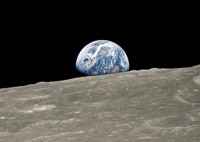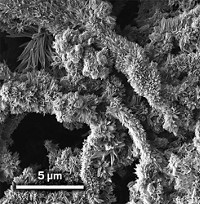Advertisement
Grab your lab coat. Let's get started
Welcome!
Welcome!
Create an account below to get 6 C&EN articles per month, receive newsletters and more - all free.
It seems this is your first time logging in online. Please enter the following information to continue.
As an ACS member you automatically get access to this site. All we need is few more details to create your reading experience.
Not you? Sign in with a different account.
Not you? Sign in with a different account.
ERROR 1
ERROR 1
ERROR 2
ERROR 2
ERROR 2
ERROR 2
ERROR 2
Password and Confirm password must match.
If you have an ACS member number, please enter it here so we can link this account to your membership. (optional)
ERROR 2
ACS values your privacy. By submitting your information, you are gaining access to C&EN and subscribing to our weekly newsletter. We use the information you provide to make your reading experience better, and we will never sell your data to third party members.
Geochemistry
Earthquakes make gold nuggets in quartz
Temblors may trigger a redox reaction that builds gold deposits in quartz
by Fionna Samuels
September 5, 2024
| A version of this story appeared in
Volume 102, Issue 28

For decades, researchers have known that earthquakes, quartz, and gold were linked—nearly 75% of gold circulating today came from nuggets originally embedded in quartz deposits near faults. But in places with no clear evidence for geochemical reactions, geologist Chris Voisey says, “the conundrum is, how did we make gold in the middle of the quartz vein?”
To answer this question, Voisey, a research fellow at Monash University, and his colleagues considered the unique piezoelectric properties of quartz (Nat. Geosci. 2024, DOI: 10.1038/s41561-024-01514-1). “If you strain it, it generates a voltage,” Voisey says.
Quartz deposits in fault zones might experience thousands of earthquakes, Voisey says. The shaking ground puts strain on the deposits, generating piezoelectricity, and creates cracks where gold-bearing water can percolate. Then, he posits, it’s a straightforward redox reaction: the excess electrons from the quartz transfer to aqueous gold ions, reducing them and precipitating solid gold.
Once some gold is deposited, “it’ll basically become the lightning rod for more reactions,” Voisey says. “This could explain large gold nugget formation.”
Voisey built an apparatus that mechanically strains quartz crystals submerged in a gold-containing solution. After months of trial and error, Voisey was elated to find gold deposits on the crystals, using scanning electron microscopy.
This new work is a fresh perspective on the association “between faults, earthquakes, and gold deposition,” says Randy Williams, an earthquake geologist at the University of Wisconsin–Madison who refereed the paper. “I think it is the kind of thing that can potentially change the field.”





Join the conversation
Contact the reporter
Submit a Letter to the Editor for publication
Engage with us on Twitter